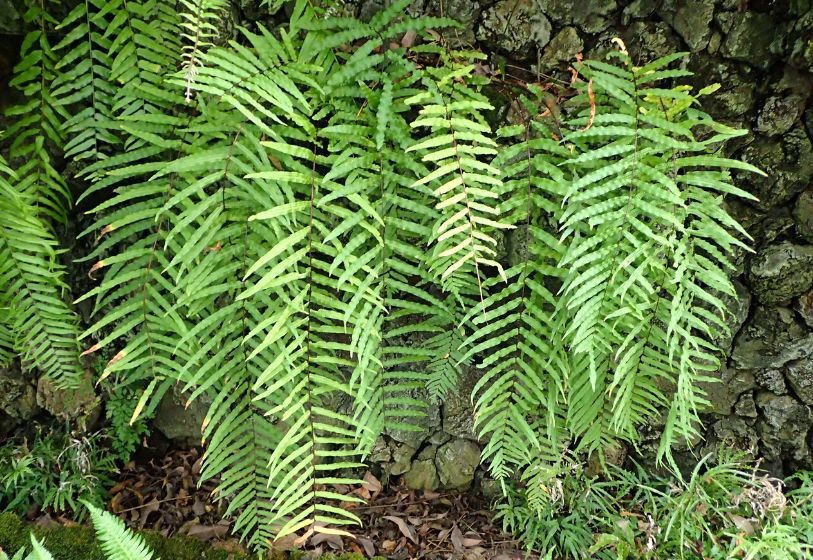The Lacy Pine Fern, scientifically known as Goniphlebium subauriculatum, is an herbaceous pteridophyte plant from the Polypodiaceae family, highly regarded for its ornamental value due to its long, cascading fronds (leaves). This fern exhibits an epiphytic or lithophytic behavior and is native to valleys, mountains, and moist sclerophyllous forests, thriving at altitudes ranging from 1640 to 5905 feet. It can be found in regions including Indonesia, Malaysia, New Guinea, the Philippines, Thailand, Vietnam, Australia, and the Pacific Islands.

It boasts a creeping and densely scaled rhizome with brown, thin, lanceolate scales, providing the rhizome with a fuzzy appearance. Each frond (leaf) has a straw-colored or brown stipe, resembling a long petiole, which can reach up to 24.8 inches in length. The fronds’ blades are pinnate, lanceolate in shape, and measure from 3.9 to 47.2 inches in length, sometimes even reaching 78.7 inches. The fronds are pendulous and composed of 30 to 40 pinnae (leaflets), which are sessile, narrow, oval to linear, with a truncated base. Their arrangement does not strictly adhere to an opposite or alternate pattern, and their margins are serrated. There’s also a cultivar with feathery pinnae, the G. subauriculatum ‘Knightii,’ commonly known as the pheasant’s tail fern. In mature plants under suitable conditions, they develop circular sori in double rows on the leaflets, one on each side of the central vein. The sori are slightly sunken on the abaxial (lower) side, causing a raised appearance on the adaxial (upper) side, creating a tactile “high-relief” sensation when touched.

The Lacy Pine fern is a staple in balconies and well-lit indoor spaces, lovingly nurtured by collectors and more recently, adored by passionate urban junglers. Typically planted in hanging baskets, pots, and planters, it’s suspended using chains or placed on iron supports to accentuate the cascading and elongated nature of its fronds. It can also be showcased in wall crevices, stairwell openings, and modern vertical gardens. The Lacy Pine fern imparts an unmistakable tropical and vintage ambiance to any decor. It’s easy to cultivate and requires minimal maintenance, primarily involving the pruning of old leaves and regular fertilization.
Cultivate it in filtered light or light shade, using a fibrous substrate enriched with organic matter that retains moisture while remaining well-draining. This fern variety appreciates constant humidity, and it’s best not to let the substrate dry out between waterings. It doesn’t tolerate the fluoride and chlorine in tap water, so it’s preferable to water it with rainwater. The Lacy Pine fern thrives in high relative humidity above 70% and won’t do well in windy or draughty spots. Employ humidifiers or mist its leaves frequently. Avoid placing it in high-traffic areas, as constant handling might be detrimental. It’s not fond of cold temperatures, but in subtropical climates, it might behave as deciduous, shedding its leaves in winter and regrowing in spring. The primary method of propagation is through division of the rooted rhizome, placed to root in a humid greenhouse during spring.

